The different healing stages after a tooth extraction (with pictures)
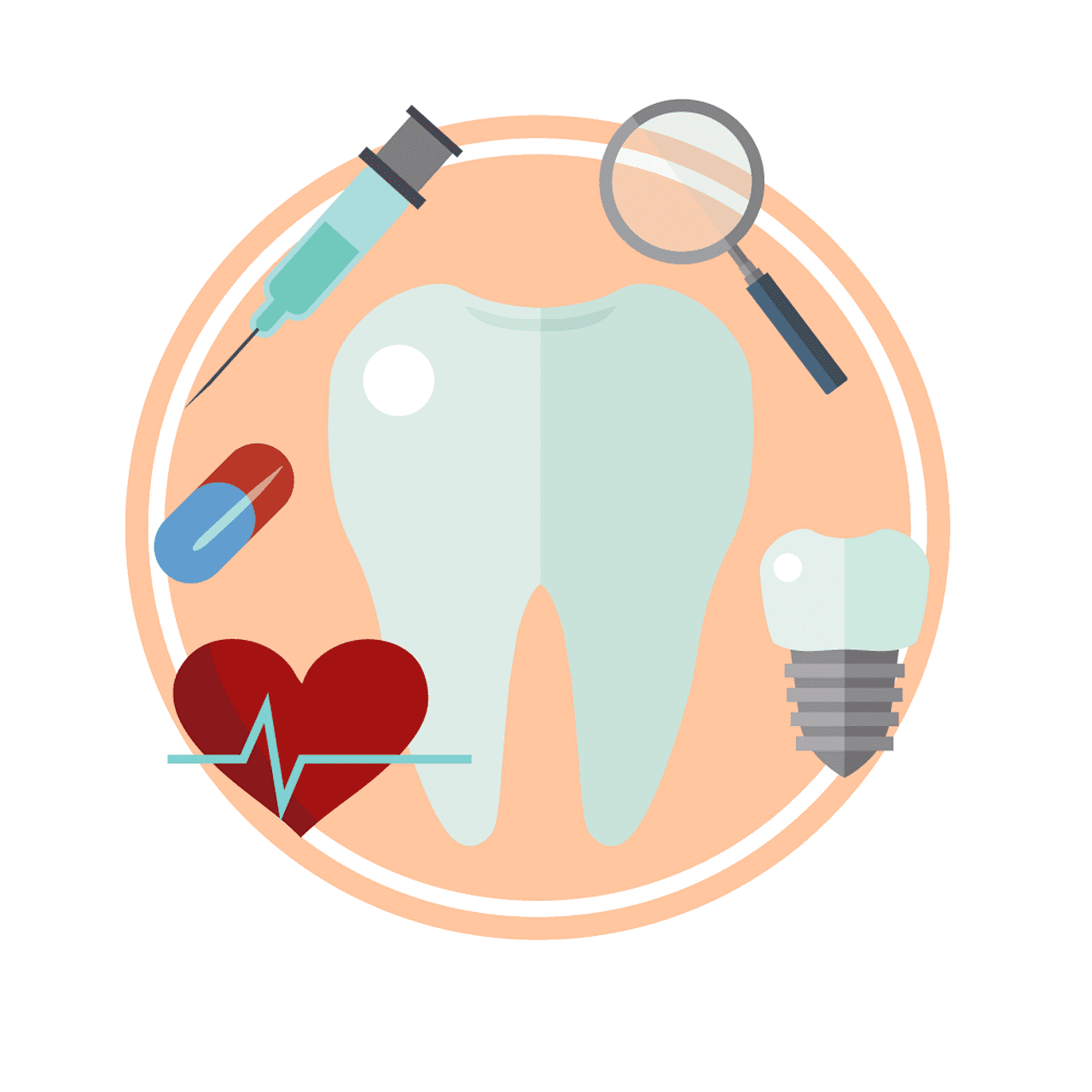 Tooth extraction is the most routine procedure, although it's the last resort when a tooth can no longer be kept in the mouth.
Tooth extraction is the most routine procedure, although it's the last resort when a tooth can no longer be kept in the mouth.
After the extraction, your body triggers a series of reactions to initiate the healing process, which can take several weeks to months. The goal is to close the wound and fill the empty socket with new bone.
During healing, you may experience a few symptoms. Understanding the different healing stages can help you manage them better and ensure a smooth recovery.
In this article, we'll go through the different stages of tooth extraction healing and give you tips on how to care for your mouth during each step.
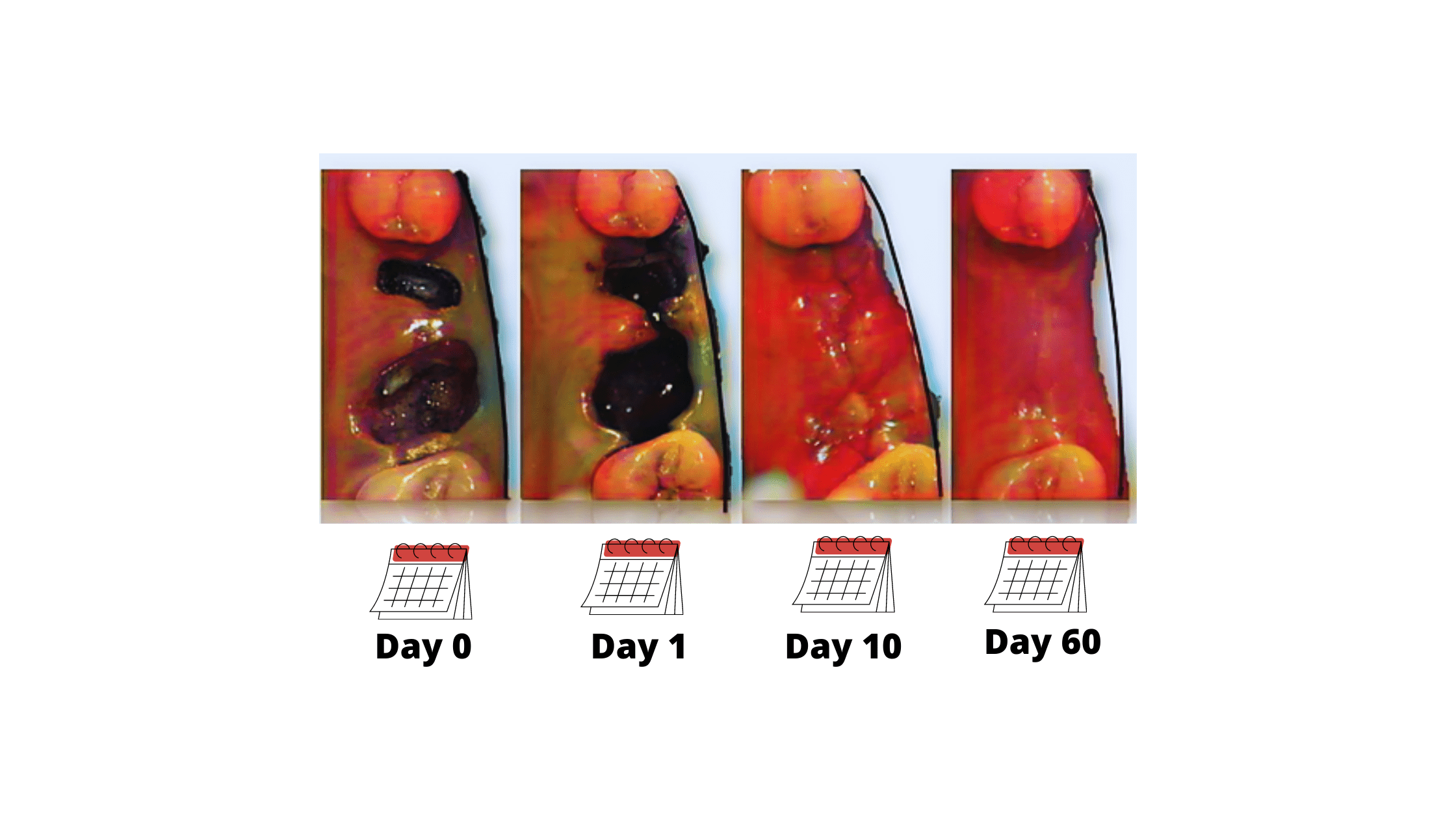
Table of content
The different healing stages after a tooth extraction:
1. Day 1-3: Blood clot formation and inflammation
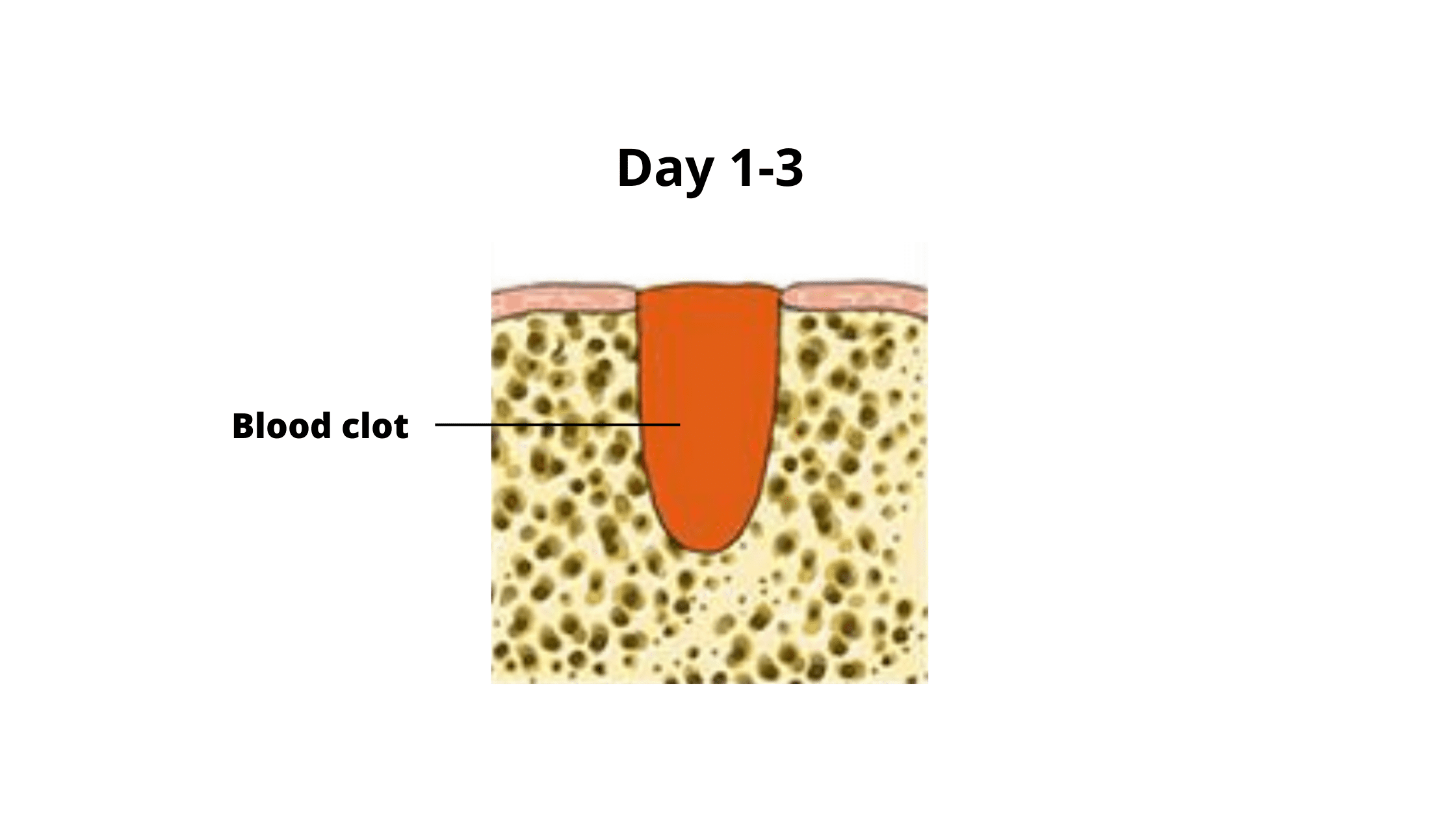 Immediately after the procedure, the blood clot begins to form. This is a reddish mass of blood that fills and protects the socket. Besides stopping bleeding, it contains living cells, proteins, and growth factors that promote healing.
Immediately after the procedure, the blood clot begins to form. This is a reddish mass of blood that fills and protects the socket. Besides stopping bleeding, it contains living cells, proteins, and growth factors that promote healing.
Alongside the blood clot formation, the body triggers inflammatory reactions to cleanse the wound. The result is intense pain, which peaks on the first day, swelling, and redness around the extraction site.
These reactions are normal, temporary, and part of the healing process. As the inflammation subsides, the pain and swelling gradually decrease, eventually disappearing by the end of the first week.
Some tips for this phase:
1. Protect the blood clot:
- Do not smoke
- Do not drink alcohol
- Do not rinse your mouth, spit, or drink through a straw during the first day
- Do not brush or floss near the extraction site.
- Avoid hot food and drinks
- Avoid strenuous physical activity
2. Manage the pain and swelling:
- For the first 24 hours, apply an ice pack to the affected area for 10 to 15 minutes at a time, several times a day.
- Take pain medication as directed by your dentist.
- From the second day on, rinse with salt water (one teaspoon of salt in a glass of warm water).
3. In case of bleeding:
- Prepare a small piece of sterile gauze and place it directly on the extraction site,
- Bite on it and hold the pressure for at least 30 minutes,
- Do not suck on the wound or run your tongue over the extraction site.
2. Day 4-5: Granulation tissue formation
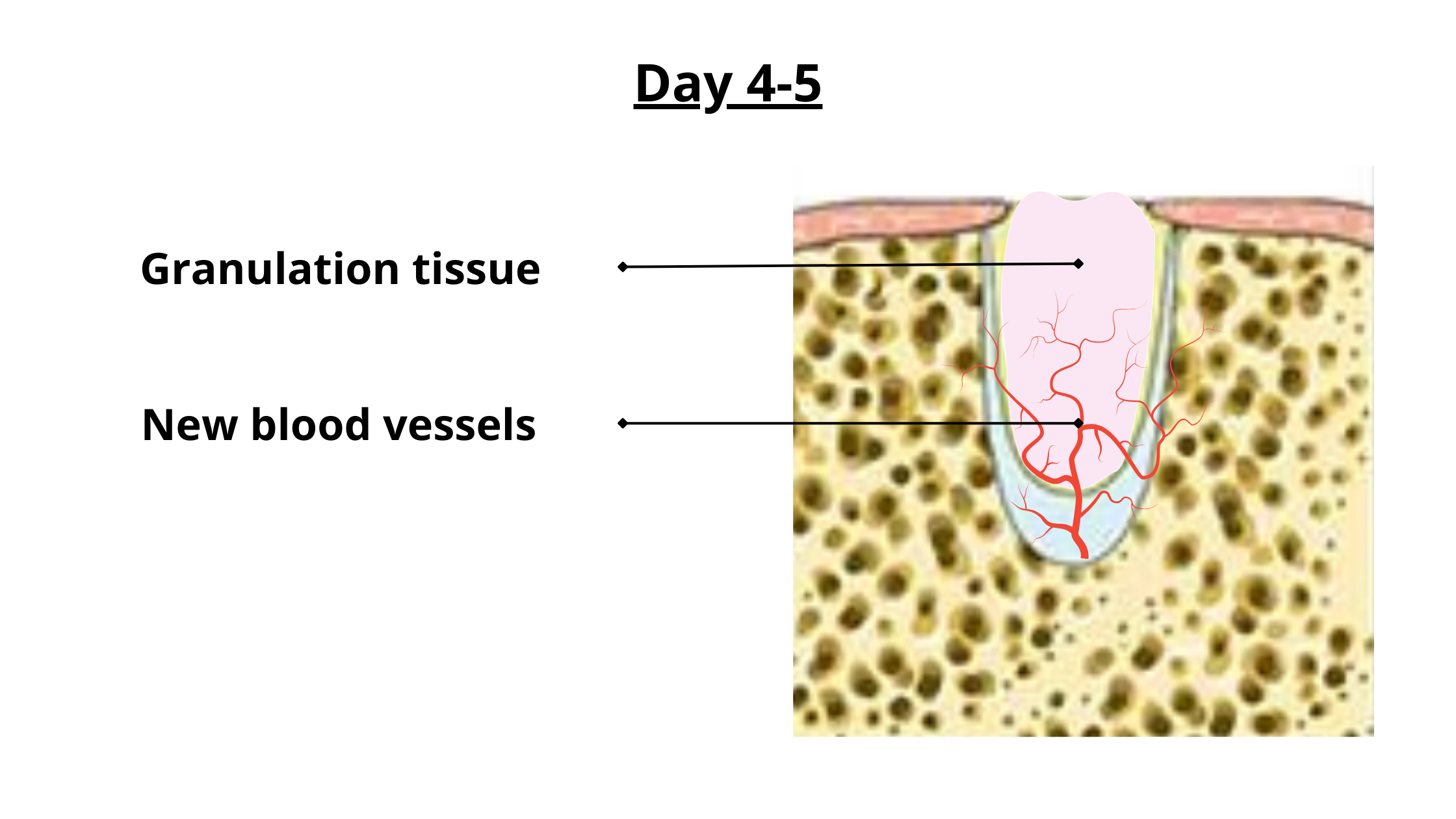 This is the granulation tissue formation phase. This stage involves the blood clot gradually taking on a pale pink color and turning into the granulation tissue. The granulation tissue is firmer and better attached due to the new blood vessels that run through it and hold it to the wound.
This is the granulation tissue formation phase. This stage involves the blood clot gradually taking on a pale pink color and turning into the granulation tissue. The granulation tissue is firmer and better attached due to the new blood vessels that run through it and hold it to the wound.
Cells will start to migrate and proliferate into the extraction site to rebuild the bone and close the wound. Although the pain may persist during meals and at night, it will be less intense as the inflammation starts to fade.
What to do at this stage?
- Continue to take medications as prescribed by your dentist.
- Continue to rinse your mouth with salt water or the mouthwash recommended by your dentist.
- Stick to a soft food diet and gradually reintroduce solid foods as healing progresses.
- Follow your dentist's instructions on when to start brushing and flossing the area to avoid infection.
- If you experience any unusual symptoms or complications, such as severe pain, fever, or excessive bleeding, contact your dentist or surgeon right away.
3. Week 1-2: Early bone formation
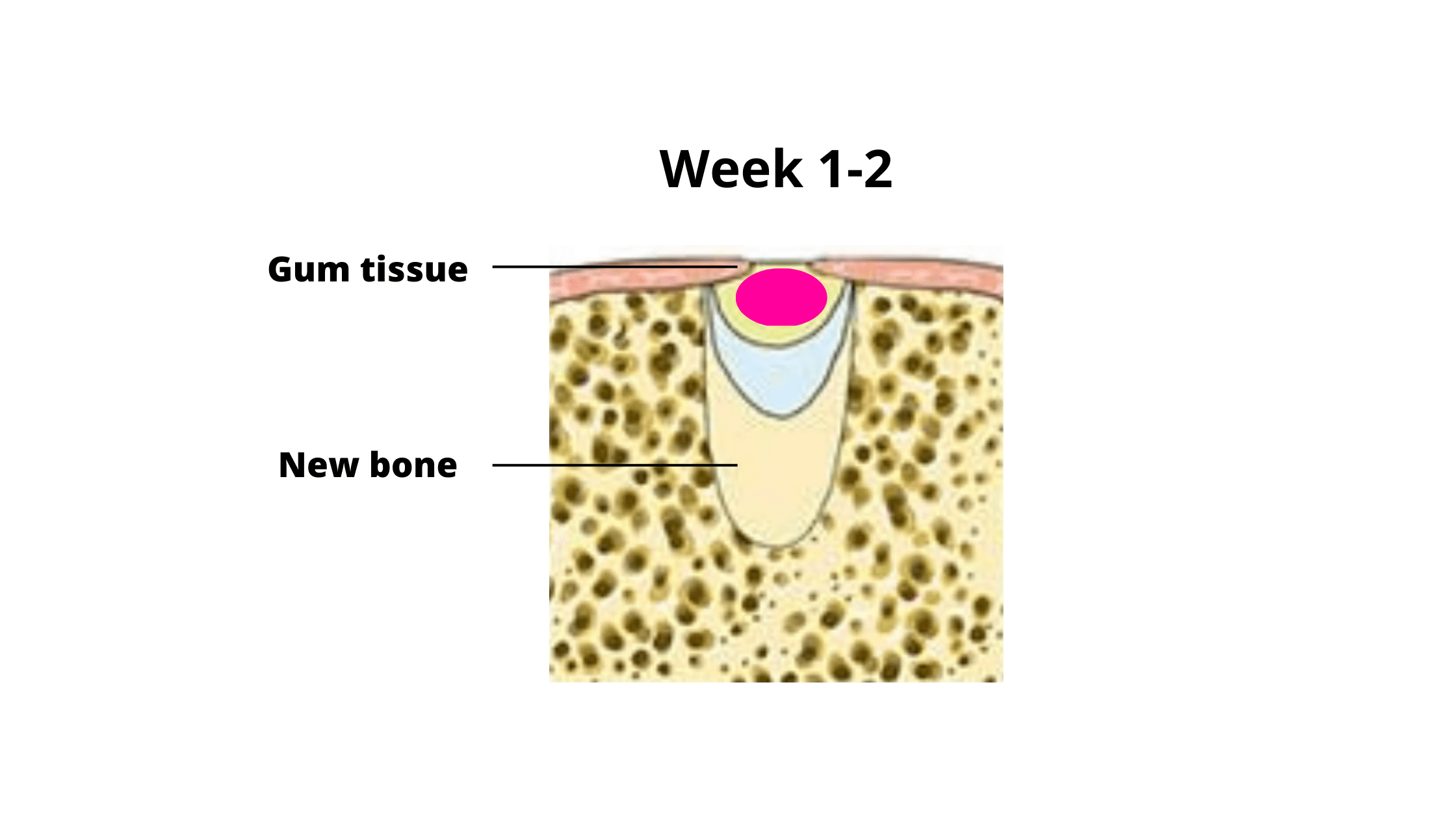 The pain and swelling should have decreased significantly, and the gum tissue will proliferate to close the socket. During this time, cells will start producing immature bone, which will start to fill the gap left by the extracted tooth.
The pain and swelling should have decreased significantly, and the gum tissue will proliferate to close the socket. During this time, cells will start producing immature bone, which will start to fill the gap left by the extracted tooth.
4. Week 4-16: Complete bone formation and maturation
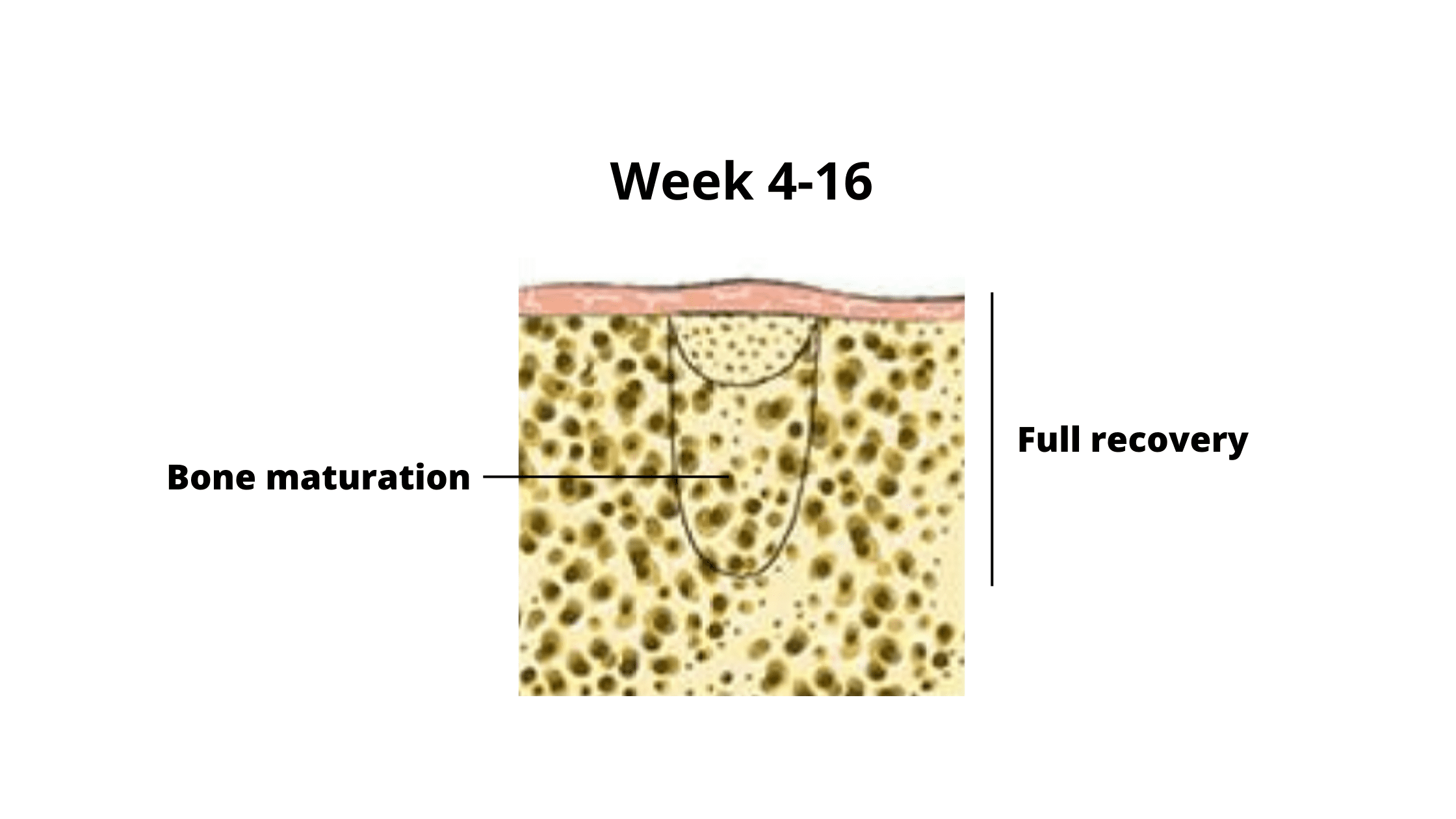 At this point, the immature bone will begin to mineralize and become stronger and more resistant. This process of mineralization and maturation can be slow and take weeks to months, depending on various factors such as age, overall health, and repair potential.
At this point, the immature bone will begin to mineralize and become stronger and more resistant. This process of mineralization and maturation can be slow and take weeks to months, depending on various factors such as age, overall health, and repair potential.
After healing, the body will continue to remodel and reshape the bone over time. Without stimulation, the bone may start resorbing. This process occurs at a faster rate during the first year and then gradually over the next few years. This is why dental implants are recommended to maintain bone stimulation and preserve its volume.
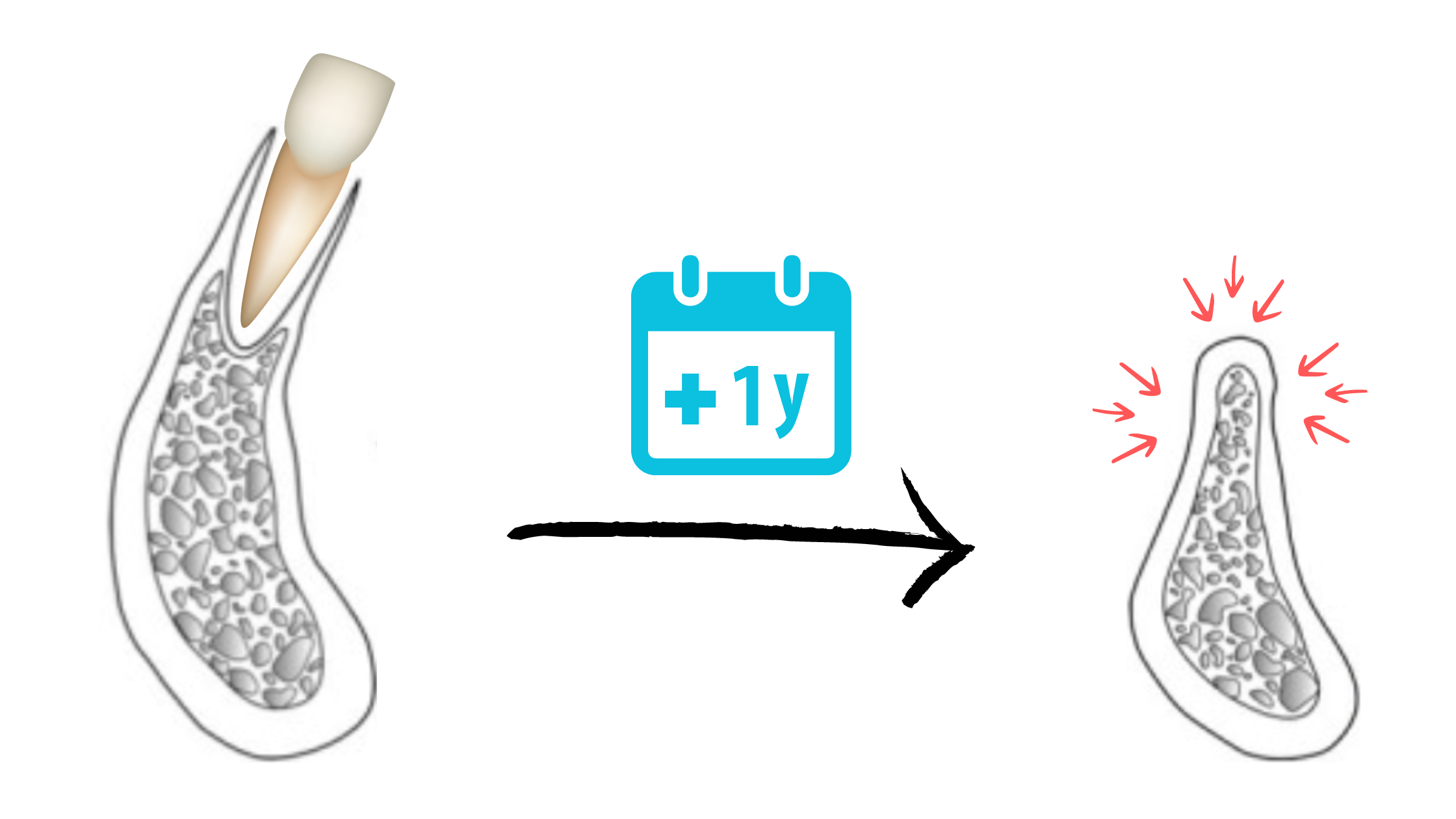
Bone loss after tooth extraction (1)
What factors can impact healing?
The time it takes for a tooth extraction wound to heal and the way tissues mature can vary from person to person. Several factors can influence healing, including:1. Smoking:
Smoking can significantly interfere with healing after tooth extraction. Tobacco and its by-products contain substances that are toxic to the body, and they can narrow the blood vessels, which can delay the healing process.
According to one study, smokers are three times more likely than non-smokers to suffer from a painful complication called "Dry Socket".
Additionally, smoking can increase bone loss after healing (1), affecting the long-term stability of the remaining teeth.
2. Extraction Technique:
The extraction technique used can also affect healing. In complex surgical extractions, where part of the bone that holds the tooth is trimmed, recovery may take longer, and pain may be more intense than with simple extractions.
3. Age:
Age can also play a role in the healing process. Older people may experience slower healing due to the natural decline in bone formation and overall tissue regeneration.
4. Following Your Surgeon's Instructions:
It is crucial to follow the postoperative instructions provided by your surgeon or dentist to ensure optimal and rapid healing. This includes all instructions regarding diet, physical activities, and medications. Not following these instructions can lead to complications and delay the healing process.
5. Nutrition:
To heal properly, the body needs different nutrients to build tissues and produce strong, healthy bone. So, make sure you take adequate amounts of vitamins, minerals, and proteins to support your body during this period.
6. Oral hygiene:
Maintaining good oral hygiene is essential to keep the wound clean and prevent infection. From the second day, gently brush your teeth (without touching the wound), clean your tongue, and do salt water rinses several times a day to reduce inflammation and promote healing while preventing potential complications
7. Certain Medical Conditions:
Certain medical conditions, such as diabetes, can interfere with healing and delay it. If you have diabetes or other conditions that affect your immune system, you should take extra care during this time to avoid postoperative complications like infection.
How do I know if the healing is failing?
Tooth extraction is generally a safe procedure, but sometimes the healing process can fail, and complications can arise, especially in individuals with certain risk factors, such as smoking or diabetes. Here are some symptoms to look out for:The blood clot did not form:
If the blood clot does not form correctly or is dislodged within the first day, it can cause excessive bleeding and lead to a dry socket, which is an extremely painful condition that can delay healing.
Bad breath and pus leaking:
During the first few days after the extraction, it's important to observe the extraction site closely. If you notice a yellow-pale fluid leaking out or bleeding granulation tissue, this may indicate an infection. In such cases, it's essential to visit your dentist as soon as possible to treat the infection and prevent it from spreading.
Swelling days after the procedure:
Swelling is a normal occurrence in the first few days following extraction and should gradually subside as the healing process progresses. However, if you notice that the swelling does not decrease or is associated with other symptoms such as severe pain, bad breath, and pus discharge, it may be a sign of infection in the surrounding tissue. In this case, don't delay seeing your dentist.
Intense pain that does not subside with time:
Although some pain and discomfort are normal following an extraction, if you experience intense and persistent pain that does not subside with time, it may be a sign of complications such as nerve damage or infection. You should consult your dentist if you experience such pain.
Fever, nausea, or vomiting:
These are signs of systemic infection and should not be ignored after tooth extraction. In rare cases, a bacterial infection can develop and spread throughout the body, causing fever and other symptoms. If you experience any of them, you should contact your dentist immediately to receive appropriate care.
- Wound healing of extraction sockets https://onlinelibrary.wiley.com/doi/abs/10.1111/etp.12016
- Smoking as a Risk Factor for Dry Socket: A Systematic Review https://www.ncbi.nlm.nih.gov/pmc/articles/PMC9317683/
- Diabetes & Oral Health https://www.nidcr.nih.gov/health-info/diabetes
- Aetiology of dry socket: a clinical investigation https://pubmed.ncbi.nlm.nih.gov/5244107/
- Complications After Dental Treatment https://www.msdmanuals.com/home/mouth-and-dental-disorders/urgent-dental-problems/complications-after-dental-treatment
